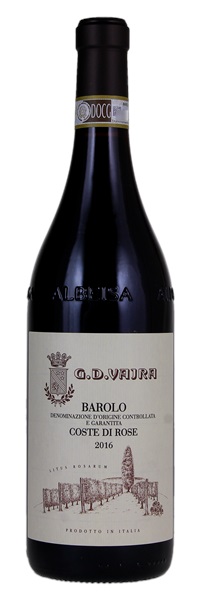Estimate

Dusty cherry, black currant, eucalyptus and hay aromas and flavors highlight this energetic red. There is purity to the beam of fruit, and while the structure is muscular, the lasting impression is of sweet fruit.
This has some very attractive rose perfume and anise spice with raspberry, redcurrant and red-cherry aromas. Blueberry pastry, too. So perfumed. The palate has very fine, almost crystalline tannins and such intense, juicy and vivaciously delivered flavors of essence-like red fruit. So precise.
...lithe, mid-weight style and a very silky finish...fragrant, floral and delicate...bouquet here is almost all wild rose, violet and honeysuckle or jasmine...fruity component of the wine is fine and light with cassis, white cherry and cranberry...hint of cherry or raspberry sweetness on the finish.
...plump, juicy and forward... Plump dark cherry, plum, licorice, spice and menthol all flesh out in a racy, juicy Barolo that will drink well right out of the gate. Plush fruit and silky tannins add to the wine's voluptuous feel and early accessibility.
Red berry, rose, dark spice and menthol form the nose while the graceful palate offers juicy Marasca cherry, strawberry compote and licorice. Bright acidity and polished tannins provide support and impart finesse.